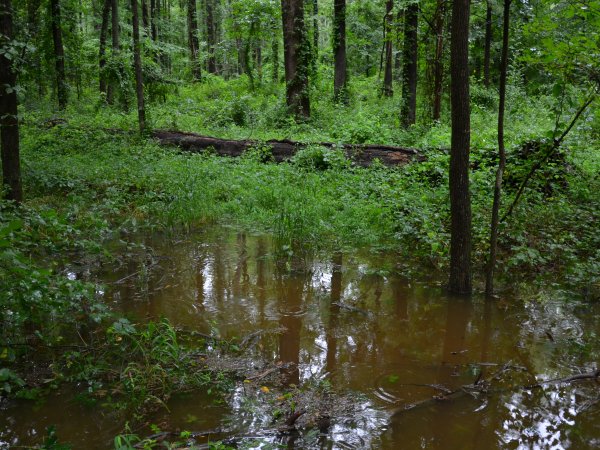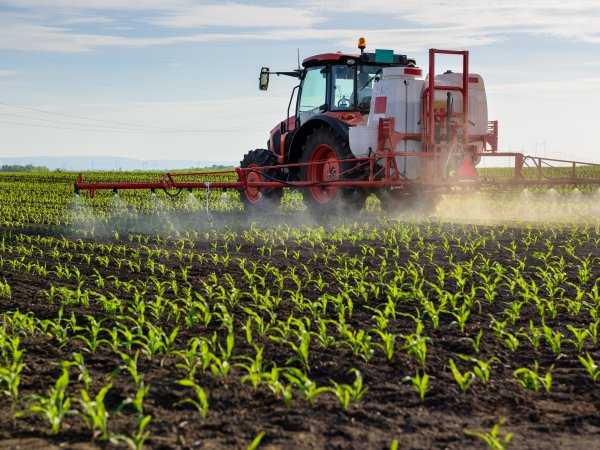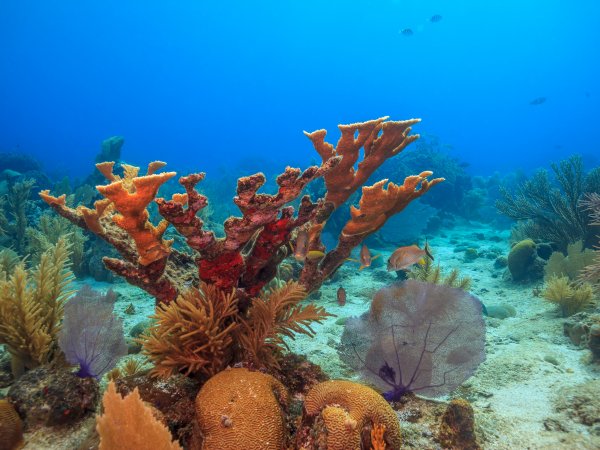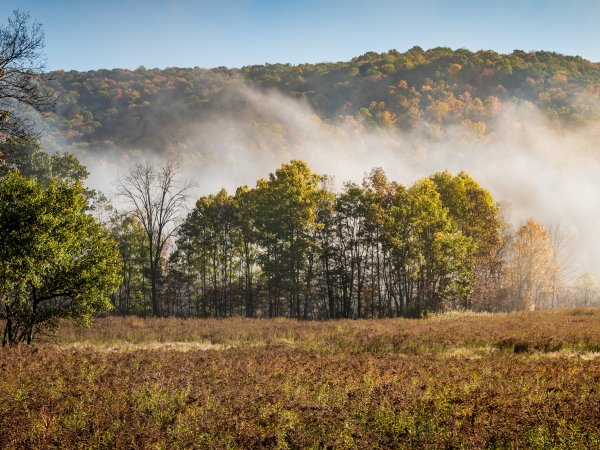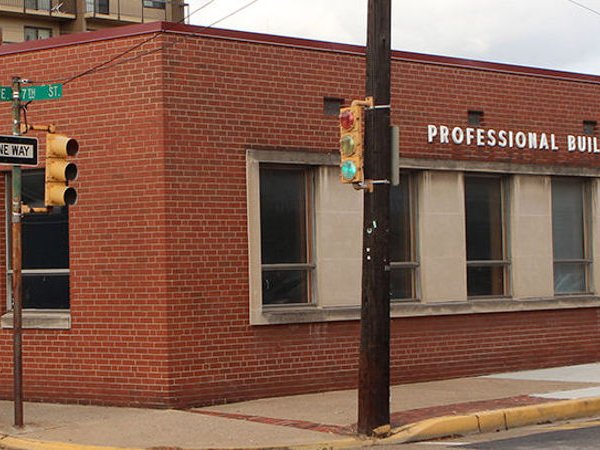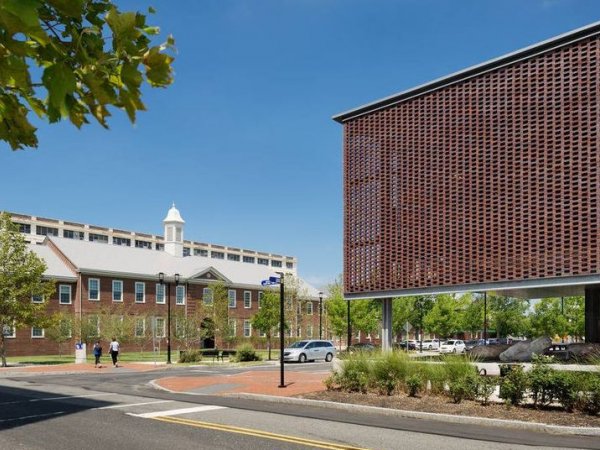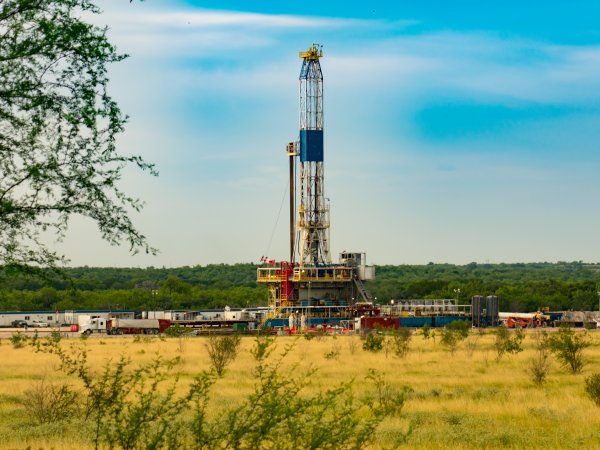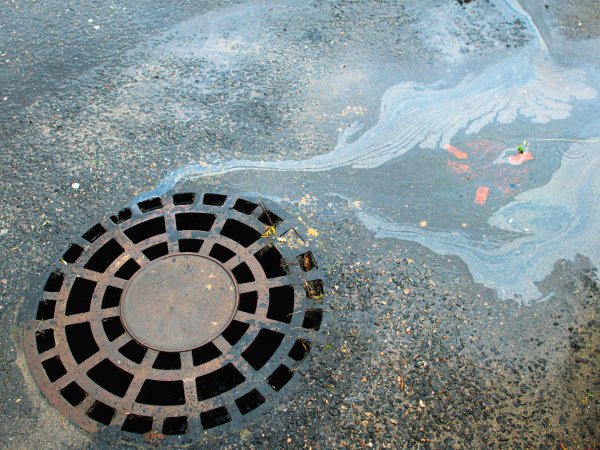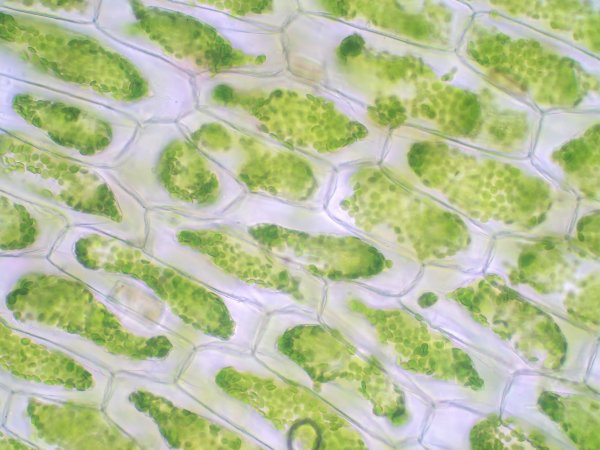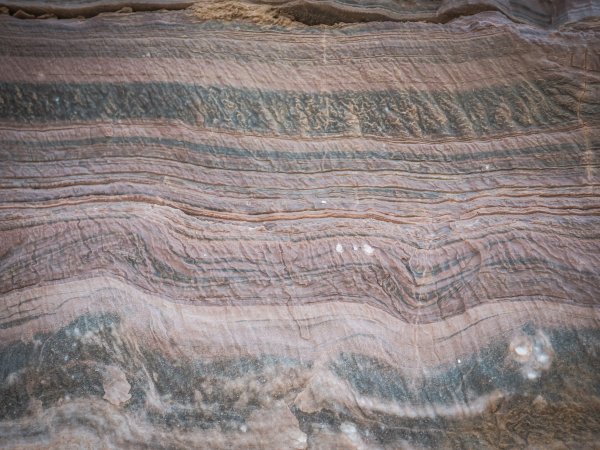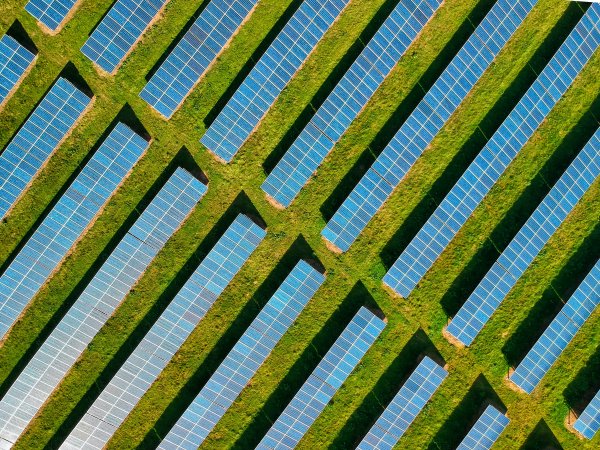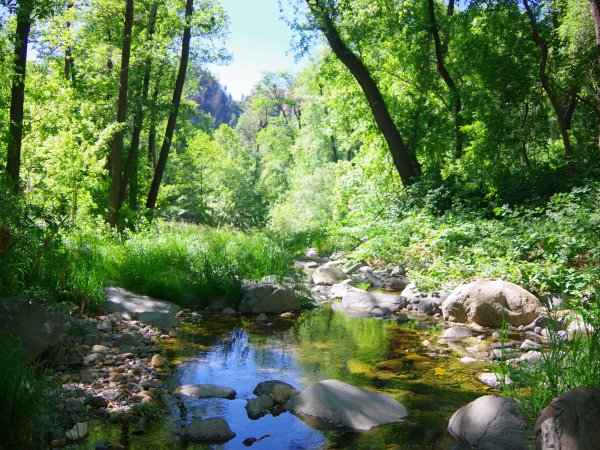Funded Projects
The following 16 projects were awarded seed grant funding in the 2018 IEE Seed Grant Program.
Assessing Wetland Characteristics of 0-Order Contributing Areas above Montane Headwater Wetland-Stream Complexes in the Appalachian Mountains – A Pennsylvania Assessment
Wetland-like features in “0-order” positions above first-order streams are small and often undetected by traditional wetland mapping. As such, these types of wetland features hidden under the canopy have been called ‘cryptic wetlands’. In high-relief landscapes such as the Appalachian Mountains, cryptic wetlands may be associated with seeps, topographic benches or depressions (e.g., the ‘saddle’ between two peaks), or drip lines of overhanging cliffs, and are typically much smaller than 0.5 ha.
Can Fertilization of Crops Alter Bedrock Weathering?
Pyrite is a common mineral in bedrock of Central PA. It can react with water and oxygen to produce ferrous iron, sulfate, and hydronium ions, common components of acid mine drainage. However, nitrate can also oxidize pyrite in anoxic conditions. Limited spatial sampling of the Shaver’s Creek watershed (Huntingdon County) has shown an increase in sulfate moving downstream from the forested headwaters to the more agricultural main stem.
Climate and Ecosystem Change: Probing the Mechanisms of Coral Phenotypic Plasticity
A defining characteristic of reef-building corals is their plasticity in response to environmental change. And yet, the ability of corals to survive environmental change is now frequently being exceeded. Because adult corals are sessile and they harbor photosynthetic algal symbionts, they face similar challenges to plants in that both have to be able to withstand and acclimatize to environmental changes without being able to move to more benign locations.
Coring of Pre-Holocene Sediments at Bear Meadows: A Coupled Record of Paleoclimate, Paleoecology, and Hillslope Erosion?
The valley and ridge physiographic province of central Pennsylvania provides an exceptional opportunity to reconstruct feedbacks between hillslope processes and Quaternary climate and ecosystem change, with implications for understanding the resilience of soil and water resources in the face of land use and climate change. Here, we propose to core Bear Meadows, a bog in central Pennsylvania near Garner Run, in order to investigate the coupled record of hillslope processes and Quaternary climate and ecosystem change.
Decentralized Control of Modular Multi-Level Converters in Photovoltaic Systems
Renewable energy resources (e.g. solar or wind) provide economic and environmental benefits for energy generation systems and are the best alternatives to conquer global warming issues. The goal of this project is to incorporate the novel application of Modular Multi-level Converters (MMC) to solar photovoltaic modules with energy storage devices to increase the efficiency, reliability, and value of the overall system.
Design and Development of an Innovative Re-Roofing Solution That Demonstrates the Feasibility of Retrofitting a Leaky Vacant Building to a Watertight and Energy Producing System
This proposal is part of a cross-institutional, multidisciplinary initiative that is directed toward revitalization of New Kensington, PA, a Rust Belt area, into a vibrant community that supports economic growth and sustainable development through entrepreneurial and innovative initiative. One of the biggest challenges in this initiative is developing an optimal solution to the existing problem of old, leaky buildings, some vacant. If our proposal is successful, the investigators will design and test a conceptual model for a new roofing composite that will sit on top of the existing roof.
Energy Efficient Buildings: Using Data Analytics to Incorporate Occupancy in Scheduling and Load Profiling
The proposed research is a new collaboration between a junior and senior faculty at Penn State Great Valley and research faculty at Penn State at The Navy Yard, and aims at leveraging the available big data on Penn State buildings at The Philadelphia Navy Yard to: (a) create a comprehensive, open-source database of validated data as the foundation for subsequent analysis in this project and to facilitate research on energy efficient buildings for other researchers and practitioners; (b) develop novel statistical and data visualization tools to analyze historical data, monitor real-time perf
Experiment and Modeling of Multi-Physics Gas Flow Dynamics through Multiscale Shale Pores
Shale gas revolution has dramatically changed the energy landscape of North America. Despite this enormous success, significant technological challenges remain, and the flow and production mechanisms of shale gas are far from fully understood. The proposed research presents a multiscale study of the fundamentals of gas transport dynamics using a multi-physics approach. The project recognizes that methane is in a supercritical fluid state at the in-situ reservoir condition and desorption of the adsorbed gas from nanopores of the kerogen exhibits both non-monotonic and hysteresis behavior.
Heavy Metal Removal from Industrial Runoff Using Manganese Modified Diatomite
The goal of this project is to remove lead (Pb II), copper (Cu II), and zinc (Zn II) ions from industrial stormwater runoff using diatomite modified with sodium hydroxide and manganese oxide (Mn-DM). In this system, the runoff water and diatomite (also known as diatomaceous earth) serve as absorbate and absorbent, respectively.
Location, Location, Location: Changing the Real Estate of Plant Cell Walls via Lignin Nanolocalization
Lignin is a major component of plant cell walls and is the primary inhibitor of biomass degradability during biofuel production, but reducing lignin content by genetic manipulation often results in poor plant growth.
Maximization of Permanent Trapping of CO2 in Geological Formations
One of the major concerns in geological storage of CO2 is the risk of leakage of buoyant free-phase CO2. Securing significant volumes of CO2 in deep formations can be achieved through occurrence of natural processes, such as solubility (i.e., CO2 dissolution in brine), residual saturation trapping, and mineral trapping that lead to permanent storage of CO2. The dissolution of injected CO2 into brine and carbonate mineral formation reactions are complex processes that dependent on temperature, pressure, brine composition, and effectiveness of the contact between brine and free-phase CO2.
Multi-Scale Estimates of Solar Power Water Stress by Integrating Process-Based Descriptions with Deep-Learning-Based Mapping of Solar Farms
Photovoltaic solar power generation has grown exponentially in recent years and will further accelerate. Solar development induces a land use land cover change which may alter water and energy cycles and increase water stress, but these impacts have been overlooked. On a global scale, two road blocks for studying such impacts on water are: (i) no detailed data exist on where, how much, what kind of solar power exist; (ii) models have not incorporated physical processes related to solar panels.
Novel Inocula for Enhanced Biological Phosphorus Removal: Bridging Stream and Engineered Ecosystems
Microbial activities can significantly affect the fate of phosphorus (P) in both natural and engineered contexts, such as agricultural soils, streams, and biological wastewater treatment systems. Much of the research in these areas has occurred in parallel research communities, with relatively little exchange of ecological and phenotypic insights between different ecosystems.
Projecting Flood Risk from Extreme Precipitation: Interaction Between Climate Change and Urbanization
We will study changing risks of catastrophic floods in populated areas. Floods result from the interaction between meteorological processes and landscape characteristics, both of which are changing due to human activity. We will examine how climate change and urbanization combine to influence flood risk now, and into the future. This project has three interdependent components. First, we will develop statistical models that can describe the frequency, severity, and spatial extent of the most extreme precipitation events.
Utilizing Hydrotropes to Increase Redox Flow Battery Storage Densities
The current electrical power grid cannot stabilize fluctuations, which results in inefficiencies and inabilities to integrate intermittent renewable energy supplies, such as solar and wind, into the grid. To address this problem, the Department of Energy has strongly supported the development of flow batteries, which are large (i.e., building-scale) stationary energy storage devises that buffer fluctuations. Flow batteries differ from conventional batteries in that charge is stored in redox-active compounds dissolved in an electrolyte (kept in tanks), instead of at electrodes.
What Would the Susquehanna River Basin (SRB) Look Like in a European Union (EU) Water Framework Directive?
Agricultural intensification, coupled with highly individualistic approaches to farmland management, has resulted in persistent water quality problems. Across the US, UK, and EU, policymakers have generally sought to remedy this situation through reactionary policies that incentivize and/or coerce farmers to change their behavior. Taken as a whole, however, these efforts are challenged by insufficient incentive structures, the diffuse nature of agricultural runoff, and the effects of legacy nutrient sources in the landscape.
RFP
Penn State’s Institutes of Energy and the Environment (IEE) has five strategic research themes of focus (listed alphabetically): Climate and Ecosystem Change; Future Energy Supply; Smart Energy Systems; Water and Biogeochemical Cycles; and Health and the Environment.
IEE established a Seed Grant Program four years ago to foster basic and applied research focused on these strategic research themes. Over the previous rounds, IEE has awarded over $1.5 million to 70 interdisciplinary projects with investigators from 15 Penn State colleges and campuses. For 2017-2018, approximately $300,000 of funding is available.
Preferred activities for funding under the Seed Grant Program are:
- Development of new interdisciplinary research teams to position them for substantial external funding success;
- Novel research in theme areas, especially high-risk proof of concept projects; and
- Collaboration between junior and senior faculty to promote research development, mentorship.
To increase the impact of the Seed Grant program and align with expanding federal and foundation opportunities, we will give extra consideration to proposals addressing transitions to sustainability associated with any facet of the first four themes (Climate and Ecosystem Change; Future Energy Supply; Smart Energy Systems; Water and Biogeochemical Cycles). Through this focus on transitions to sustainability, we hope to see proposals that examine processes of transformation of coupled human and biophysical systems, including metrics, incentives and behaviors, policies and governance strategies that limit or facilitate innovation and change.
As with last year, a separate multi-Institute request for proposals on the theme of Health and the Environment will be issued later this fall or winter.
Seed Grant Eligibility
All Penn State faculty members (tenured, tenure track, and fixed term) who hold an appointment of half-time or more at any Penn State campus are eligible to submit a seed grant proposal as a Principal Investigator (PI). Researchers, students and staff from Penn State, Pennsylvania state agencies, federal agencies, and private industry may be included as collaborators in seed grant proposals. Please note that while most proposals are expected to include multiple investigators, there can only be one responsible PI for each application. In addition, investigators may only serve as PI on a single proposal. New investigators will be given preference over those who may have previously received an IEE seed grant.
Funding Availability
To encourage the establishment of new collaborations and enhancement of networks, larger grants will require innovative partnerships of investigators from multiple colleges and/or campus locations. Funds up to $25,000 are available for multi-college (across University Park) and multi-campus (between campuses) collaborative grants; up to $10,000 for two or more faculty from the same college (University Park) or Commonwealth Campus; and up to $5,000 for a single investigator project.
Funds can be used to support research development and coordination expenses such as:
- Graduate and undergraduate student support
- Instrumentation fees and sample analysis to collect preliminary data
- Equipment, supplies, and participant payments
- Travel associated with conducting/reporting seed grant research (Penn State participants only)
- Hosting a research planning meeting for an interdisciplinary team
- Planning and hosting conferences and symposia
- Funding for data conversion technology and wages to support date conversion Funding is limited or not allowed for the following:
- Single college/campus funding, even with several departments, is capped at $10,000
- Summer or supplemental salary support for faculty
- Postdoc salary
- Travel support to attend conferences
Submission Instructions
All pre-proposals must be submitted electronically via upload from the link at http://www.iee.psu.edu/seedgrant/2017/apply no later than 5:00 pm on Wednesday, October 4, 2017. Each pre-proposal is limited to a 1-page project description and additional pages for an appendix.
The one-page project description must include the following:
- Title of project
- List of PI and collaborators, including college, department and/or campus
- Short description of the project (understandable by an interdisciplinary audience)
- Short description of how this project will leverage seed funding
- Nature of collaboration (new/existing; mentorship opportunities)
- Total funding to be requested, including short description of anticipated expenditures
The appendix will include a list of all collaborators, their colleges and/or departments, and 1- page resumes for the PI and all co-PIs.
Timeline for pre-proposals and proposals (note, all deadlines are Wednesdays) Sept. 5, 2017, 11:00-12:00 Informational webinar for pre-proposal questions, Oct. 4, 2017 Pre-proposals due no later than 5:00 pm
Week of Oct. 30, 2017 PIs notified of pre-proposal result; full proposals requested Dec. 22, 2017 Full proposals due no later than 5:00 pm
January 31, 2018 Seed Grant funding decisions announced
Grant funds will be available by April 1, 2018 and must be expended by June 30, 2019.
Review Criteria
Pre-proposal and Proposal reviews are based upon the following criteria:
- Intellectual merit of the proposal, including relevance to strategic priorities and contribution
to global leadership in a prioritized theme; creativity and innovation; significance of goals and results; soundness of research plan; and likelihood of successful project completion. Please note that these proposals are reviewed by a cross section of researchers with different backgrounds; your ability to communicate your ideas to a broader audience is important for success with interdisciplinary project review panels.
- A credible and clearly articulated strategy for leveraging this seed grant investment into exceptional scholarship and/or significant external funding. Potential for additional/continued activity beyond the seed grant phase may include plans for continued activity such as applications for external support from federal, state or local government agencies, industry, private foundations, etc.; plans for continued research activities involving in-kind support, teaching activities, on-going scholarly work, etc.; plans for public engagement and outreach; and expanded implementation by external stakeholders. Providing specific examples, including specifics of external funding opportunities, contact with program officers, etc. has been helpful in establishing the credibility of these strategies to prior seed grant reviewers.
- Realistic potential for developing new and productive collaborations between PIs with special consideration given to mentorship and collaborations between junior and senior faculty. Possibilities for additional activities and projects which draw upon the seed grant partnership should be specified.
- Appropriateness of the budget request for supporting the proposed research.
- Extra consideration will also be given to projects that are able to take data and help leverage that into knowledge and on the ground impact. For more on this, see http://www.iee.psu.edu/research.
Pre-proposals will be reviewed by a set of reviewers, and categorized as “Request Proposal” or “Do Not Request Proposal.” Those invited to submit a full proposal will be given additional information.
Please direct any questions regarding the proposal process to iee@psu.edu.

